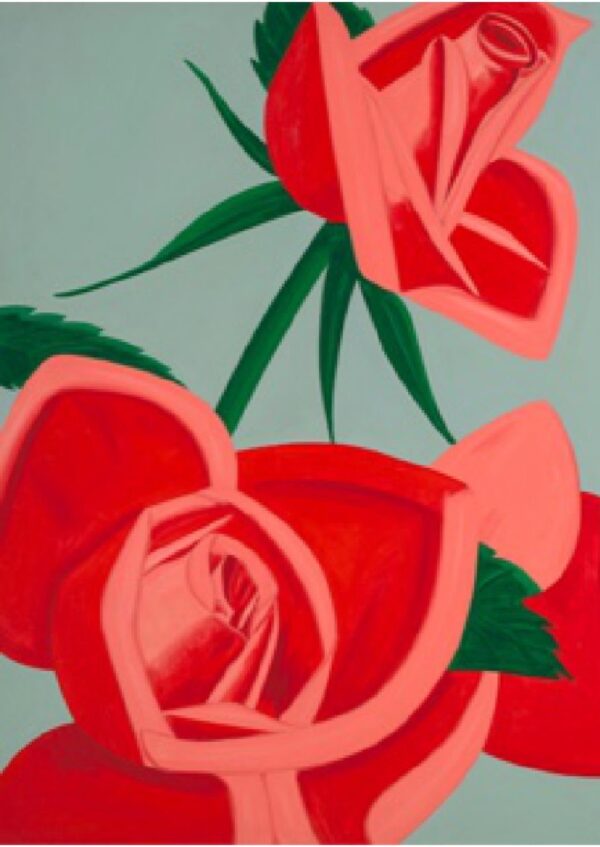Alex Katz
Provenance: Published by Lococo Fine Art, St. Louis
Private collection
Alex Katz was born in Brooklyn, New York in 1927. In 1928, at the outset of the Depression, his family moved to St. Albans, a diverse suburb of Queens that had sprung up between the two world wars. Katz was raised by his Russian émigré parents, both of whom were interested in poetry and the arts, his mother having been an actress in Yiddish Theater. Katz attended Woodrow Wilson High School for its unique program that allowed him to devote his mornings to academics and his afternoons to the arts. In 1946, Katz entered The Cooper Union Art School in Manhattan.
Katz has received numerous accolades throughout his career. In 2007, he was honored with a Lifetime Achievement Award from the National Academy Museum, New York. In 2005, Katz was the honored artist at the Chicago Humanities Festival’s Inaugural Richard Gray Annual Visual Arts Series. The same year, he was awarded an Honorary Doctorate of Fine Arts from Colgate University, Hamilton, New York— his second Honorary Doctorate, following one from Colby College, Maine, in 1984. Katz was named the Philip Morris Distinguished Artist at the American Academy in Berlin in 2001 and received the Cooper Union Annual Artist of the City Award in 2000. In addition to this honor from Cooper Union, in 1994, his alma mater created the Alex Katz Visiting Chair in Painting with the endowment provided by the sale of ten paintings donated by the artist. Katz was inducted by the American Academy and Institute of Arts and Letters in 1988. In 1987 he was the recipient of the Pratt Institute’s Mary Buckley Award for achievement and also received the Queens Museum of Art Award for Lifetime Achievement. The Chicago Bar Association honored Katz with the Award for Art in Public Places in 1985. In 1978, Katz received the U.S. Government grant to participate in an educational and cultural exchange with the USSR. Katz was awarded the John Simon Guggenheim Memorial Fellowship for Painting in 1972.
Works by Alex Katz can be found in over 100 public collections worldwide. Most notably, those in America include: Albright-Knox Museum, Buffalo; The Art Institute of Chicago; The Brooklyn Museum; Carnegie Museum of Art, Pittsburgh; Des Moines Art Center; Hirshhorn Museum and Sculpture Garden at the Smithsonian Institution, Washington, D.C.; The Los Angeles County Museum of Art; The Metropolitan Museum of Art, New York; Milwaukee Art Museum; The Museum of Fine Arts, Boston; The Museum of Modern Art, New York; The National Gallery of Art, Washington, D.C.; National Museum of American Art, Smithsonian Institute, Washington, D.C.; National Portrait Gallery, Smithsonian Institution, Washington, D.C.; Philadelphia Museum of Art; the Wadsworth Athenaeum, Hartford; and The Whitney Museum of American Art, New York. Additionally, Katz’s work can be found in the Albertine Graphische Sammelung (Austria), the Atenium Taidemuso (Finland), the Sara Hildén Art Museum (Finland), the Bayerische Museum (Germany), the Berardo Collection (Portugal), the Essl Collection (Austria), the French National Collection, the Israel Museum, IVAM Centre Julio Gonzalez (Spain), the Metropolitan Museum of Art (Japan), Museum Moderne Kunst (Austria), the Museo Nacional Centro de Arte Reina Sofia (Spain), the Nationalgalerie (Germany), the Saatchi Collection (England), and the Tate Gallery (England), among others.
In 1968, Katz moved to an artists’ cooperative building in SoHo, New York City, where he has lived and worked ever since. He continues to spend his summers in Lincolnville, Maine. (taken from Alex Katz.com)





